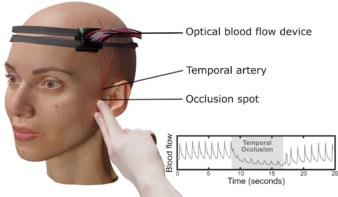
Accelerated partial breast irradiation (APBI) is non-inferior to conventional whole-breast irradiation in preventing breast tumour recurrence, according to long-term findings of a trial of over 2100 women. The study demonstrated comparable survival following either treatment. However, moderate late toxicity and adverse cosmetic results were greater for women who received the twice-daily APBI (Lancet 10.1016/S0140-6736(19)32515-2).
For women with early-stage breast cancer, whole-breast irradiation after breast conserving surgery reduces local recurrence, improves survival and provides good cosmetic results. However, the treatment usually takes three to five weeks. APBI provides a more convenient radiation treatment, as it is delivered over one week or less. By targeting radiation dose to only the area surrounding the tumour and not the entire breast, APBI techniques enable larger radiotherapy fractions to be delivered in a shorter period with similar toxicity to whole-breast irradiation.
The goal of the RAPID trial was to determine whether external-beam APBI was non-inferior to whole-breast irradiation with respect to preventing local recurrence. Led by Timothy Whelan, of McMaster University and the Juravinski Cancer Centre, the study was performed at 33 cancer centres in Canada, Australia and New Zealand.
The trial included 2135 patients aged between 54 and 68 years with ductal carcinoma in situ or node-negative invasive breast cancer. Patients were randomized to receive either APBI (1070 women) or whole-breast irradiation (1065) following surgery. Tumour size was smaller than 1.5 cm for around 70% of participants.
While APBI can also be delivered via brachytherapy or intraoperative therapy, the researchers chose external-beam radiotherapy for the APBI arm because it is non-invasive, uses modern CT planning systems and because linacs are widely available. Women in the APBI group received 38.5 Gy in 10 fractions administered twice daily, separated by 6–8 hr over five to eight days. Patients in the whole-breast irradiation group received 42.5 Gy in 16 daily fractions, or 50 Gy in 25 fractions if large-breasted. Moderate- to high-risk patients in this group also received boost radiation to the primary tumour site.
Sixty-five patients developed breast cancer recurrence, including 37 who received APBI and 28 who underwent whole-breast irradiation. The eight-year cumulative rates of ipsilateral breast tumour recurrence (IBTR) were 3.0% in the APBI group and 2.8% in the whole-breast irradiation group. In more than half of these, recurrences occurred at or near the primary site, though the researchers note that more women had recurrence in other areas of the breast in the APBI group than in the whole-breast irradiation group.
The trial found no differences in disease-free, event-free survival and overall survival between the two groups, and comparable levels of death caused by breast cancer.
Acute radiation toxicity (grade 2 or greater) occurring within 90 days of the start of treatment was much higher for the whole-breast irradiation group. However, the reverse was true for late toxicities, with 32% and 4.5% of the APBI group experiencing grade 2 and 3 toxicities, respectively, compared with 13% and 1.0% for the whole-breast irradiation group.
APBI patients experienced worse cosmetic outcomes three, five and seven years after treatment (evaluated by the patients, nurses and physicians) than those who received whole-breast irradiation. The researchers attributed this to an increase in late subcutaneous tissue fibrosis and skin telangiectasia, toxic effects that led to a deterioration breast appearance that worsened over time.
As a result of these findings, the authors do not recommend the twice-daily APBI protocol, referencing more recent clinical APBI trials that suggest a 6-hr interval between external-beam radiation treatments is insufficient to repair radiation injury to healthy tissues. They note that APBI given once per day might not be associated with increased toxicity and is under ongoing investigation.
The RAPID trial also revealed the unexpected finding that more recurrences occurred away from the primary treatment site after APBI. “The inference is that the part of the breast not radiated is at a higher risk of developing either recurrence or a new cancer,” the authors wrote. They recommend additional research, because partial breast irradiation is based on the observation that most recurrences occur at or near the site of the primary tumour, an assumption that the RAPID trial findings now challenge.
A similar randomized trial of 4216 women treated at 154 centres in the USA, Canada, Ireland and Israel concluded that APBI was not equivalent to whole-breast irradiation for in-breast tumour control. However, the absolute difference in the 10-year cumulative incidence of IBTR was less than 1%. More patients in the APBI group had recurrence-free interval events, but the absolute difference between 10-year recurrence-free estimates was also small. Distant distance-free interval, disease-free survival and overall survival did not differ between patient groups receiving APBI and whole-breast irradiation (Lancet 10.1016/S0140-6736(19)32514-0).
Led by Frank Vincini of NRG Oncology and the Radiation Oncology Institute of St. Joseph Mercy Hospital, this clinical trial had broader eligibility requirements, allowing younger participants, with larger tumours, and including lobular cancer. A total of 4% of the APBI-treated group and 3% of the whole-breast irradiation group developed recurrent breast cancer. The team did not see a similar pattern of late toxicities to the RAPID trial.
“The findings support whole-breast irradiation. However, the absolute differences in ipsilateral breast-tumour recurrence were small, such that APBI might be an acceptable treatment in some patients,” the researchers concluded.



